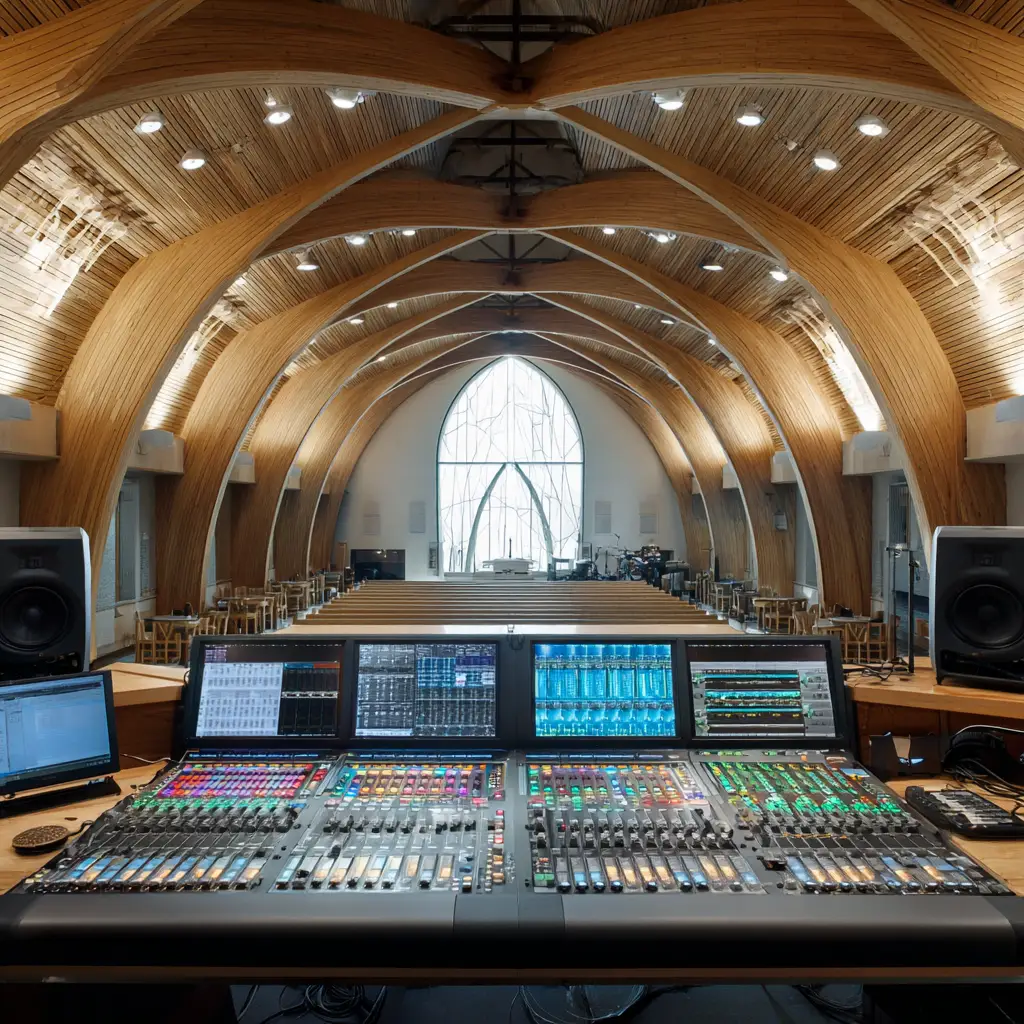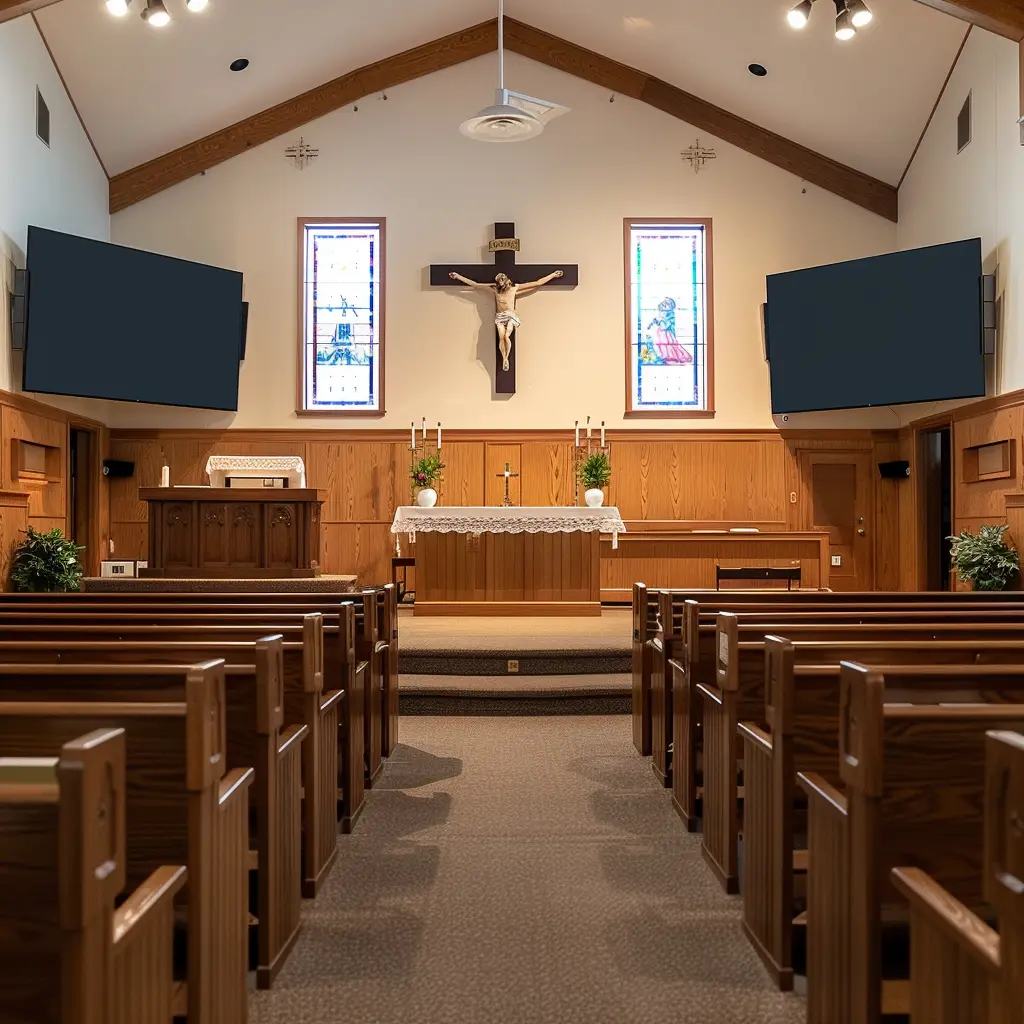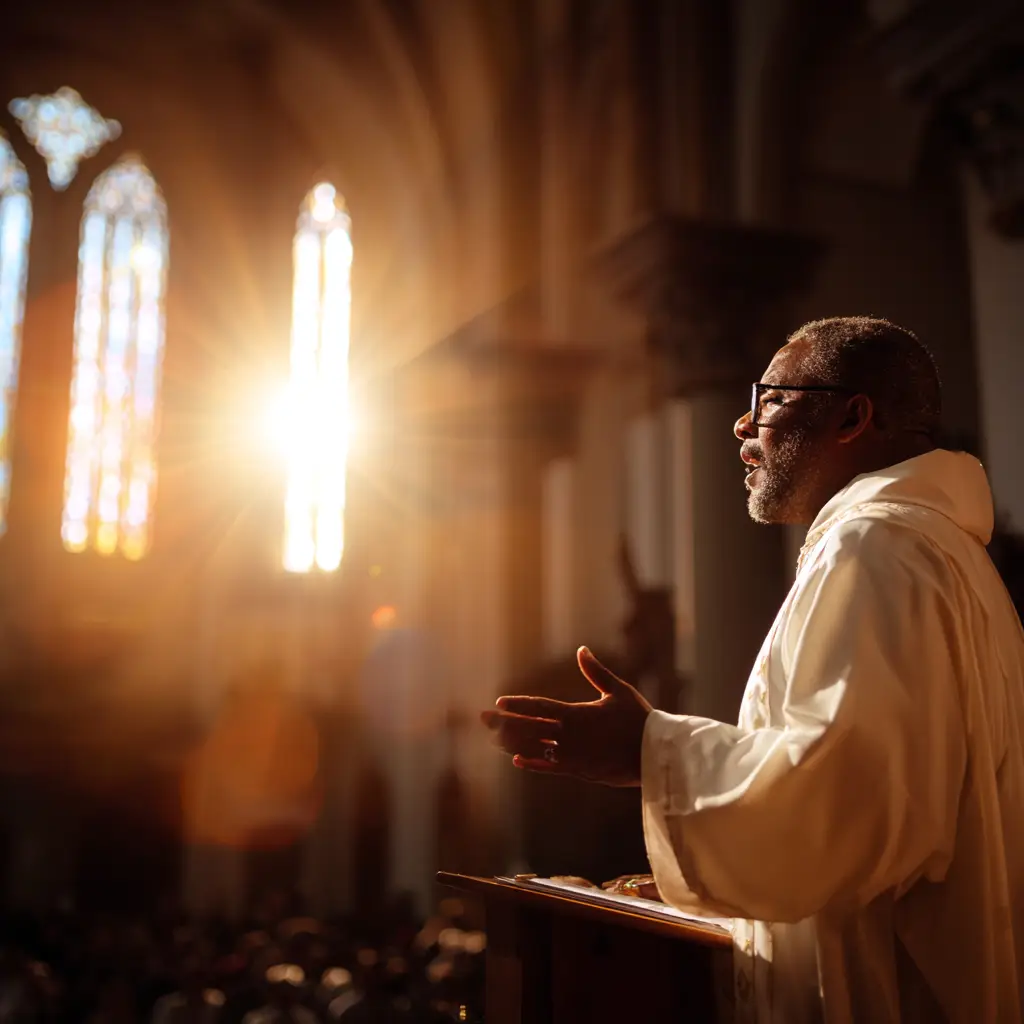
If you've ever sat through a service where the microphone cut out mid-sermon or the music was drowned in feedback, you know just how important a reliable sound setup is to a worship experience. But when it comes time to budget for new audio equipment, many churches feel lost. What should you realistically plan to invest? And why do quotes vary so dramatically from one church to another?
Here's the truth: there's no universal church sound system cost because every worship space and ministry has different needs. What works perfectly for one congregation might be completely wrong for another. Understanding what drives these differences is the key to making smart investment decisions for your church.
Why church sound system costs vary so dramatically
After ten years of designing church audio systems, I've learned that several critical factors determine what your church will need to invest:
Room acoustics and size make the biggest difference. A small fellowship hall with carpet and low ceilings has completely different requirements than a large sanctuary with hard surfaces and vaulted architecture. Poor acoustics can make even expensive equipment sound terrible, while good acoustics can make modest systems shine.
Worship style and complexity directly impacts equipment needs. A church focused on spoken-word worship services needs different capabilities than one with full bands, multiple vocalists, and complex musical arrangements. Worship leaders with contemporary styles often require wireless systems and in-ear monitors, while traditional services might need simpler audio solutions. Live streaming adds another layer of requirements entirely.
Volunteer skill level matters more than most churches realize. The most sophisticated digital console in the world won't help if your volunteers can't operate it confidently. Sometimes the best audio solution is simpler equipment that your team can use effectively during worship services.
Future ministry plans should influence today's decisions. Are you planning to add contemporary services? Start streaming? Host community events? Planning for growth now prevents costly replacements later.

Understanding capability levels: What your investment gets you
Instead of focusing on specific dollar amounts, think about what level of capability your church actually needs:
Essential Coverage
Best for: Small congregations, primarily spoken-word services, limited volunteer technical support
This level focuses on clear speech reinforcement throughout your worship space. You're investing in reliable microphones, powered speakers that provide even audio coverage, and a mixing system your volunteers can operate without extensive training. Ceiling speakers might be part of the solution for distributed audio coverage. The goal is dependable audio that doesn't become a distraction during worship services.
Key considerations: How many people need to speak during services? Do you have acoustic challenges like echo or dead spots? Can your volunteers handle basic mixing tasks?
Full Worship Support
Best for: Churches with music ministry, multiple microphone needs, volunteer-operated systems
This capability level supports both spoken word and musical worship with equipment designed for volunteer operation. You're adding wireless systems for freedom of movement, in-ear monitors for worship leaders and musicians, and digital console capabilities that handle more complex audio scenarios while remaining approachable for non-technical operators. Powered speakers at this level provide better audio coverage and more flexibility for different worship services.
Key considerations: How many musicians and vocalists do you typically have? Do you need wireless freedom for pastoral movement? Are you planning to record services or support additional venues?
Complete Ministry Platform
Best for: Larger congregations, multi-purpose facilities, streaming services, complex productions
This level provides professional-grade capabilities that support diverse ministry activities. You're investing in advanced audio solutions that can handle everything from intimate worship to large events, with features like assisted listening, broadcast capabilities, and integration with lighting and video systems. Line arrays and sophisticated powered speaker systems ensure consistent audio coverage throughout large or acoustically challenging spaces, while advanced digital consoles provide the flexibility worship leaders need for complex productions.
Key considerations: Do you host events beyond weekly services? Are you broadcasting or streaming? Do you have multiple venues or outdoor services? Are acoustics a significant challenge in your space?
Hidden factors that affect your investment
Churches often underestimate several cost drivers that significantly impact their total investment:
Acoustic treatment isn't optional equipment—it's often essential for any audio system to work properly. Hard surfaces, high ceilings, and poor room design can make even expensive equipment sound muddy or create feedback problems. The Audio Engineering Society provides technical standards that help guide proper acoustic design for worship spaces.
Installation complexity varies dramatically between buildings. Some churches have existing infrastructure that makes upgrades straightforward. Others need extensive electrical work, cable runs, or structural modifications. Following AVIXA standards for professional AV installation helps ensure systems are designed and installed correctly the first time.
Operator training and support determines whether your investment actually improves worship. The most capable equipment in the world won't help if your volunteers are intimidated by it or unsure how to handle common situations.
Integration requirements add complexity when your audio system needs to work with existing lighting, video, or streaming equipment. Planning these connections properly prevents compatibility issues and additional costs down the road.

Making smart investment decisions for your church
The best church sound system isn't the most expensive one. It's the one that reliably serves your ministry at a cost your congregation can sustain.
Start with your actual needs, not your wish list. What problems are you trying to solve? Poor speech clarity? Feedback issues? Inability to support musical worship? When churches focus their investment on addressing these specific challenges, they get better results for professional church audio solutions.
Plan for your volunteers, not audio professionals. Choose equipment complexity that matches your team's comfort level and available training time. Sophisticated features you can't use effectively are wasted investment.
Consider your building honestly. Some acoustic challenges require treatment before any equipment upgrade makes sense. Other spaces work well with basic systems. Understanding your room's characteristics helps you invest wisely.
Think beyond Sunday morning. If your space hosts community events, youth activities, or special services, factor these into your planning. Multi-purpose functionality might justify additional investment.
Getting realistic budget guidance for your church
Every church deserves audio that supports effective worship and ministry. Whether your needs are simple or complex, there's a solution that balances capability, usability, and cost.
The key is honest assessment of your specific situation. What works for the church down the street might be completely wrong for your space, congregation, and ministry style.
Ready to understand what your church actually needs? At RYGID AV, we've helped churches throughout North Carolina create audio solutions that work, regardless of budget size. We'll assess your space, worship style, and goals to give you realistic guidance that fits your specific situation.
Let's start with an honest conversation about what's possible for your church. Contact us to schedule a consultation and get clarity on your audio investment.
RYGID AV | 122 Backstretch Ln., Mooresville, NC 28117
(980) 268-8066 | info@rygidav.com
Where to Contact + Connect with RYGID AV
Mooresville, NC 28117

.webp)